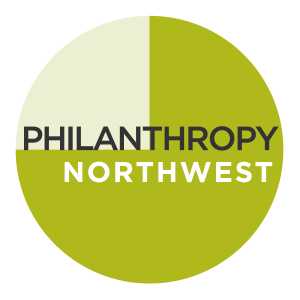Staying in the loop takes a concerted effort
Most discussions of boardsmanship assume a service-providing agency governed by a self-perpetuating board to which outsiders are recruited because of their wealth, talents, or connections. The nonprofit world also includes a range of membership associations — from professional societies to “friends of” fundraising bodies — in which the majority of board positions are filled by members of the association, either by election or appointment.
Both types of boards hold similar legal authority, but the members of an association board have a different responsibility to the general membership of which they are a part. Association members know that joining the board is an elevation in status and carries perks, from a reserved table at the annual banquet to certain expense reimbursements to privileged knowledge of confidential association business. Of course, those benefits are earned by contributing far more time and work for the good of the association than an ordinary member. But the more deeply involved board volunteers become, the more likely they are to feel that the average member is disengaged from or even uninterested in the issues that have now become the focus of their attention. It’s a self-fulfilling cycle that leads to separation.
Here’s an example of how this happens in communications. While regular members receive periodic, brief updates on the work of the association, those on the inside of decision-making receive lots and lots of information. At times, they probably feel they are drowning in it.
In the process, the board learns the nuances of why a proposal is adopted or fails, why money is spent on one thing but not another, and how staff priorities are set. It can be a stinging surprise to hear members question any of this. What might be a matter of insufficient information is misperceived as a challenge to the competency of the board, and a circle-the-wagons defensiveness can emerge.
Easy as it is for board members to grow distant from the general membership, it isn’t inevitable. Avoiding this trap requires paying attention.
Tips for Keeping in Touch
One of the most effective techniques to stay connected with members is simple. At each decision-making juncture in any board meeting, assign someone the task of asking, “How will this affect the average member?” If you aren’t certain of the answer, don’t make the decision until you field-test the idea.
It’s also important that all board members continue to attend regular member meetings, especially local chapter meetings if the board is at the state, regional, national, or international level. This keeps board volunteers tied to day-to-day association life. It’s fine to attend meetings only periodically because of the time demands of board work. But every board member should nevertheless be encouraged to stay connected with the “home” group in some way.
In addition to making sure board members keep going back to the local level, bring regular members to the board. Invite association members to speak at board meetings, either to explain proposals or activities in which they have a personal stake or simply to make a regional report. Since most association boards are elected by the membership, there is no good reason why board meetings should be closed to such participation.
Still another simple but powerful idea: Commit each board member to telephoning one association member a week. The staff can randomly select the names and distribute the list monthly. These are not cold calls, as both people are already connected to the association. To guide the conversation and record the gist of the discussion, develop a brief telephone call response sheet. It can be on paper to fax in, or electronic to zip off via email. Key questions can change from month to month to solicit input on any number of association priorities.
Such calls serve several purposes:
- Keeping the board member in touch with issues on the ground;
- Generating useful spot-check survey data; and,
- Making the members contacted feel positive about the association’s leadership. There’s nothing like a little attention to make people feel visible and supported.
Do the math. One call a week equals 52 calls per board member a year without much effort at all. Now, multiple that by the number of board members and you’ll see the impact.
Tips for Special Gatherings
Any gathering of members — a conference, annual meeting, or special event — is an important opportunity for the board to simply mingle, talk, and listen. Accomplishing this, however, takes planning. Here are some suggestions:
- Limit the number of back-room meetings during association conferences. Although it’s understandable to want to maximize board members’ time to conduct business while they’re already on site for your convention or other general meeting, members might perceive this as a convenient way to avoid interacting with them. Even if this is a false assumption, volunteer leaders who are kept in private meetings simply cannot be talking to members at the same time. Hold board meetings before or after the conference to give leaders the freedom to actually participate in the conference itself. This advice goes double for the executive committee.
- Never allow the board to sit together at any general membership event. Insist that board members scatter to different banquet tables, attend a range of concurrent workshops, and even sit randomly throughout the hall at a plenary session. Encourage everyone to have informal conversations, but with a purpose: Agree on one to three questions that every board member will ask during the course of the event so that afterward you can share frequent responses.
- Make sure board volunteers are identifiable. Provide special name tags, color codes, or ribbons. This gives the average member a fighting chance to recognize and talk with you.
Officers Set the Tone
The board chair establishes the board culture and therefore bears responsibility for ensuring that the sort of stay-connected activities described above become a natural expectation of any board member.
Is the chair accessible or are ordinary members put through a maze of formal procedures to get an audience? Other officers, especially the secretary and treasurer interact with local counterparts to exchange information or request or require reports. Is such contact formal or informal? Are requirements and rules handed down with little concern for how local-level members will react? Do the officers give plenty of warning about changes in procedures, or do these changes come as a surprise? How comfortable do members feel about asking for clarification from the officer or even in challenging the rationale or process?
Strategize how to overcome or prevent an us-and-them culture. For example, get feedback on ideas before they are enacted, perhaps with a quick survey form that the board e-mails to a random selection of members. Hold online chats between board members and general members at announced times and on specific subjects. Even if only a few members participate, you get a lot of good will from publicizing these opportunities — they imply openness to interaction.
The Staff’s Vital Role
Long-time paid staff members who have gone through many changes of board membership can be a great asset in supporting the board’s efforts to stay connected. They can orient new leaders to established practices such as the ideas described here (or recommend them for discussion and adoption) and model them in their own work with members.
Conversely, an association might have veteran leaders and a changing corps of employees. In that case, the board chair needs to encourage ways to engage staff in setting the tone. Staff members are the ones who have daily contact with association members. They possess invaluable knowledge of what people are saying and feeling. How often do you give them the opportunity to bring that information to the board table?
Susan J. Ellis is president of Energize, a Philadelphia-based training, publishing and consulting firm specializing in volunteerism. Her email is [email protected] and her Web site is www.energizeinc.com












